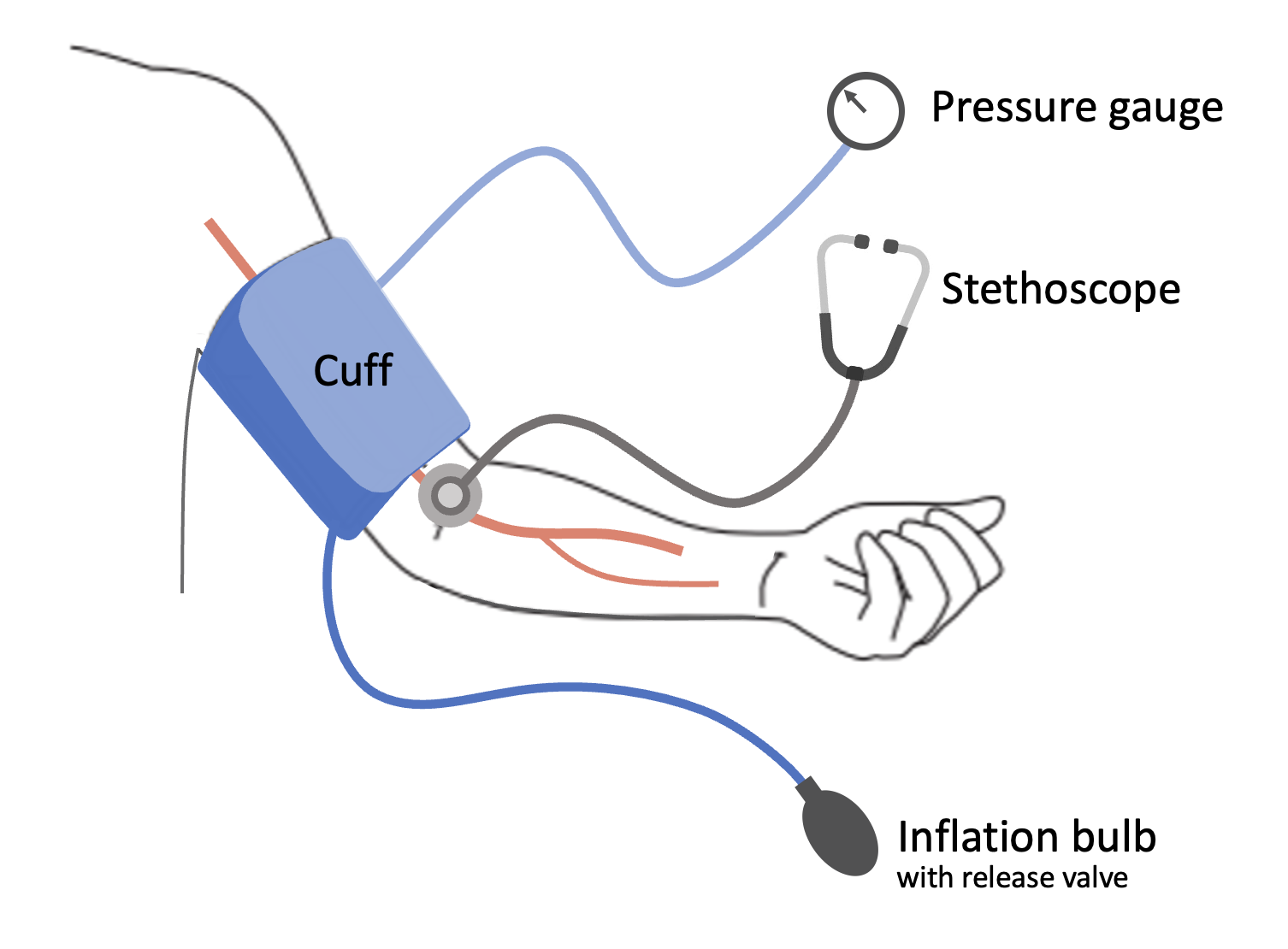Blood pressure measurement:
Inferring arterial pressure from outside the body
Hypertension is the number 1 cause of premature death worldwide
Hypertension, or sustained raised blood pressure, causes hardening of the arteries and decreased blood flow, making it a major risk factor for cardiovascular disease and strokes. 1 in 3 adults in the UK have hypertension.
Hypertension is often asymptomatic, with symptoms only appearing when significant health problems have already arisen. Successful diagnosis and subsequent management therefore requires regular and accurate testing.
For regular, routine testing, blood pressure is usually measured indirectly, using a blood pressure cuff
Cuff-Based Blood Pressure Measurement

Manual cuff measurement is:
-
Non-invasive
-
Low risk
-
Quick
-
Low cost
-
But inaccurate
How does Cuff Measurement work?
- An inflatable cuff is placed around the upper arm
- The cuff is inflated to above the maximum blood pressure
- The cuff is then gradually deflated at a rate of ~2-3mmHg/s
- During deflation, ‘tapping’ sounds are heard through a stethoscope
- These sounds are known as Korokoff sounds
- The cuff pressure at the start and end of the Korotkoff sounds is recorded as the maximum and minimum blood pressure respectively

Initially, the cuff is inflated to a pressure above the blood pressure. The cuff therefore holds the artery closed
The cuff pressure is then gradually released…
The artery will then open and close, as the blood pressure exceeds the cuff pressure for part of each cycle…
The blood pressure then exceeds the cuff pressure the whole time, so the artery remains open
Korotkoff sounds are produced each time the artery opens. Therefore, the first sound will occur when the cuff pressure is equal to the maximum blood pressure, when the artery first opens. And the last sound will occur just as the cuff pressure drops below the minimum blood pressure.
The cuff pressure at which the Korotkoff sounds start and end are therefore used as a proxy for the maximum and minimum blood pressure.
But, this method is inaccurate
Errors of this magnitude will result in 20-30% of patients with systolic hypertension being missed, while the number of patients diagnosed with diastolic hypertension (minimum blood pressure > 90mmHg) will be increased by 132%
The aim of this research is therefore to understand the physics of the auscultatory method and establish how it could be made more accurate
The description of cuff measurement above treats the artery and cuff as a very simple 2D system where the artery has no stiffness and the cuff pressure is applied directly to the outside of the artery wall. In reality the system is more complex. We are currently investigating three key causes of inaccuracy:
1. Artery wall stiffness
2. Surrounding wall tissue
3. Varying pressure along the artery


